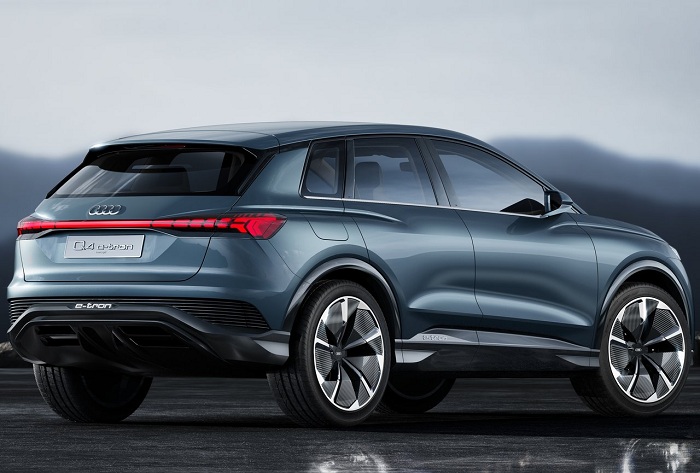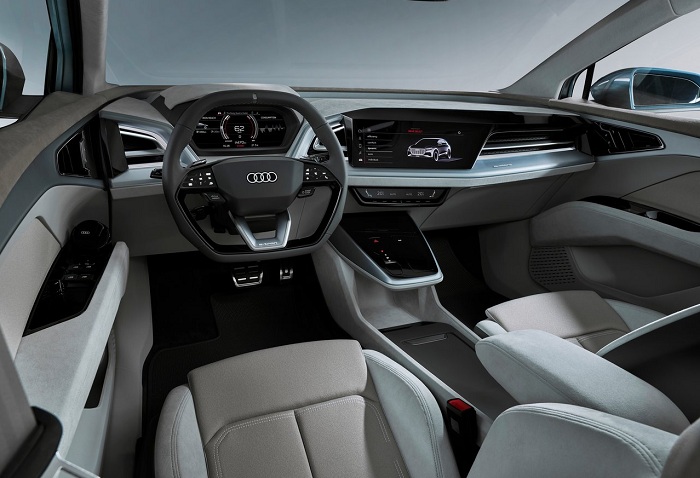The second Volkswagen Group model shown in Geneva after the Volkswagen ID Buggy Concept to make use of the dedicated MEB platform, the Q4, as its name suggests, will slot in between the Q3 and Q5 and according to the Ingolstadt manufacturer, provides a glimpse of what to expect from its forthcoming range of electric models.

Measures 4.59m in overall length with a wheelbase of 2.77m, height of 1.61m and width of 1.90m, the Q4 still comes with Audi’s corporate Singleframe grille despite the all-electric powertrain, yet also features wider air vents, Matrix LED headlights, a full-length rear light arrangement derived from the A7, shaved door handles and a smattering of e-tron badges at the base of the rear doors, on the front splitter and on the expansive faux diffuser.
Finished in a unique colour called Solar Sky that Audi claims has been developed using environmentally friendly techniques and which changes colour depending on the light and angle, the interior boasts a futuristic design with the 12.3-inch MMI infotainment system being angled towards the driver, while the Virtual Cockpit Display digital instrument cluster is supplemented by an augmented Heads-Up Display readout. Doing without a transmission tunnel, the Q4 is claimed to offer “unsuspected spaciousness and comfort” for both front and rear passengers, with the cabin itself being outfitted in Alcantara and leather, while the floor cover is made from recycled materials.

In addition to sharing the ID’s platform, the Q4 also comes equipped with the same electric motor that provides 150kW/310Nm, though the inclusion of a second unit that powers the front wheels making the Q4 four-wheel drive, adds a further 75kW/150Nm, bringing the combined output to 225kW. According to Audi, the claimed range on a single charge is rated at 450km, though it can be charged up to 80% using a fast charging station in around half-an-hour. Top speed is limited to 180km/h with the 0-100km/h dash taking 6.3 seconds.
Serving as Audi’s dedicated fifth all-electric e-tron model, the Q4 is expected to enter production in 2020.
















